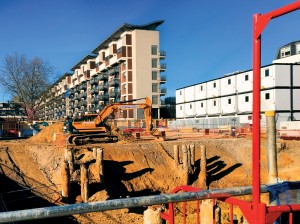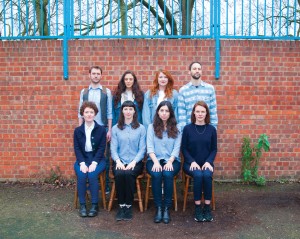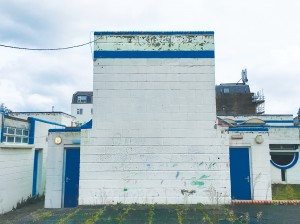An old school in Hackney and Hammond’s budget speech: surviving London’s housing crisis
The first time that the Tory Party finally mentioned the housing crisis, since the snap election, was during Hammond’s November budget. However unlike these elitists, who clearly only care about their influential wealthy friends, most of us deal with the problem of affordable housing in this city and country on an every day basis. And some of us, like the artist known as EnterHUMAN, highlight the issue in their work.
Guardians: the school we lived in, was her insightful documentary photography exhibition, that took place at the BSMT Gallery space from 19 to 23 May. It highlighted the 14 months that the nine property guardians lived in their converted classrooms turned bedrooms. EnterHUMAN describes the experience: “Property guardianship, a business whereby abandoned or disused buildings are rented, has prospered in recent years as a result of the current housing crisis and particularly since squatting became a criminal offence in 2012. The main appeal for property guardians is that rent is cheap and the buildings on offer are often commercial properties which provide large spaces in prime locations.”
The exhibition happened at a pivotal time in UK politics because just after it finished the country woke up to a hung parliament, Theresa May’s gamble of a snap election saw the party lose their majority. Britain still faces a huge housing crisis as it did then, yet it was not one of the top issues seen as most important to a lot of British voters at the time, for those of the Ukip/Tory brand, it was the issue of immigration.
Leading up to the 2017 elections the Tory party made sure to jump on the fear train, aping Ukip rhetoric of the so called outsider coming to take British jobs away, counting on Brexiter supporters and former Ukipers to swell their ranks and it worked. But when the dust settled and the fear mongering subsided people still needed homes. So it perhaps came as no surprise, as this ruling Tory government creates disaster after disaster and becomes even more unpopular, that this budget deals with two issues addressed by an ever increasingly popular opposition Labour party: university tuition fees and more affordable housing. The latter Hammond said about in his speech, “We also want to help low-income households in areas where rents have been rising fastest.In the long run, the answer lies in increasing the amount of housing available – a theme I shall return to.” I am sure myself like many others will be waiting with bated breath when perhaps he “shall return” to the concept of mentioning it again at the next budget speech.
The gentrified borough of Hackney, where the exhibition took place, has some of the highest prices in London. Statistics from 2015 show that since 2010 rents in the borough have gone up by 40 per cent to £1,000 a month and that is still £300 cheaper than the most unaffordable boroughs of Westminster and the City of London. Yet Hackney is endemic of a lot of other areas of London where gentrification is pushing the prices up as people are forced to move further out or try to find alternatives to the housing issues if they want to remain in the city.
I was one of the nine people who lived in the school and I had the former Head Teacher’s office as my bedroom. What brought us all together in this space was predominantly the rent issue because as a housing guardian although your stay may not be guaranteed for an definite period, as buildings become converted or torn down, we were still given a four week notice period to leave. And the way that so many landlords in the borough of Hackney are realising how much they can charge for rent, and without warning hold tenants to gunpoint of pay more rent or leave, in many ways I felt more secure being a property guardian at the school and paying a set amount of cheap rent than being in a traditional rented accommodation.
EnterHUMAN the artist , a friend of mine who also lived in the school, describes the practice of guardianship and her show: “There are, however, regular inspections and renting is on the basis of short-term licence agreements which means the length of stay is often unpredictable. The school, built in 1969, was in use until 2014 for children with learning difficulties. Despite the school’s uncertain future the property guardians remained creative and resilient; repurposing the space and breathing new life into the old classrooms. They lived there for 14 months before the school was demolished in 2016.”
The exhibition also focused on the architecture of the building with its strange brick blue painted, semi-eclipsed window frames encompassed in white breezeblock walls. A room dubbed the “emotion room” where images of six different emotions were painted on the wall with the words to describe them, possibly for upset children to reach a calmer state. In addition to this, the photographs highlight objets trouvés with the many found toys, strange button and switches that made the premises a time capsule of a lost world. The site of the former school is now making way for a new build of posh flats that has rapidly risen up from the rubble.

The site of the old school as the spiral of building unaffordable housing by wealthy developers in London continues from the rubble up.
The show can be looked upon as a testament to a city where a large part of the population is besieged by property developers, gentrification and a lack of regulations to stop excessive rents from spiralling out of control. It’s legacy could also be seen as an era when a government, that is now on its last legs, ignored the plight of so many who are trying so hard to make London a home which has now more than ever become a place that has been repurposed to forget their needs.


























